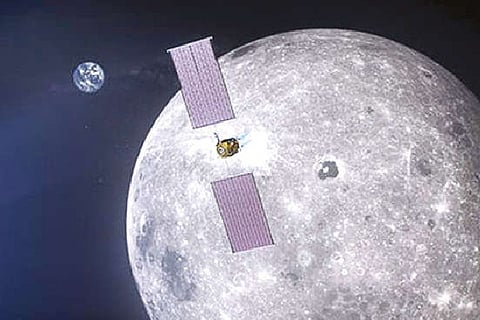

Chennai
“I can remember being interested in space when I was very young, but that became a fascination when I was in high school and we studied the Hayabusa 2 project,” said 20-year-old Nagasaku. Hayabusa 2 was a JAXA mission launched in 2014 to collect samples from asteroids. In 2018, a Hayabusa 2 rover landed on the asteroid 162173 Ryugu and a capsule returned the samples back to Earth in December 2020.
With its mission completed, the spacecraft has been re-purposed and sent to rendezvous with asteroids at the edge of the solar system. Since Hayabusa 2 was launched, it has orbited around the sun for a total of 6.2 billion kilometers (3.8 billion miles) and is at present nearly 99 million miles from the Earth. “That is an unbelievable achievement, and that mission really made me want to have a career in space,” Nagasaku told DW.
Next wave of space exploration
And Nagasaku may be just the kind of candidate that JAXA is seeking. In late November, JAXA announced that it was launching a recruitment drive for a new generation of space explorers for the first time in 13 years. As an engineering student, Nagasaku would be a perfect fit, as space programs traditionally recruit people from science, engineering and mathematics. However, JAXA has said it would broaden its criteria and no longer disqualify applicant with arts degrees.
By early 2023, JAXA said it expects to narrow applicants down to an unspecified “small number” who will progress to astronaut training. The initial aim is to have a Japanese crew included aboard a space station that will orbit the moon as part of the NASA-led Gateway project, an important part of the US space agency’s Artemis program to return astronauts to the lunar surface.
Gateway envisages the construction of a space station orbiting the moon, followed by building of a permanent base on the lunar surface. A key element of the initiative is encouraging more women to become astronauts, JAXA said. At present, all of Japan’s seven serving astronauts are men, and just 13% of the 963 applicants in the last round of recruitment, in 2008, were female. This time, the agency hopes to have women accounting for 30% of the successful applicants.
Naoko Yamazaki, Japan’s second female astronaut, is a key element of the campaign to attract women to the project.
She took part in an online event on December 1 in which anyone considering applying to the program could put questions to JAXA officials and astronauts. “I was interested in space from when I was a child, but Japan did not have an astronaut at that time, so that became my ambition,” said 50-year-old Yamazaki, who was aboard the 2010 NASA space shuttle mission to the International Space Station (ISS). “Space exploration is entering a new era and moving on from the ISS to a facility on the moon, so the next generation of Japanese astronauts will need to be flexible,” she told DW. “If their training does not immediately go smoothly, they must be able to find another way to succeed,” she added.
This article was provided by Deustche Welle
Visit news.dtnext.in to explore our interactive epaper!
Download the DT Next app for more exciting features!
Click here for iOS
Click here for Android